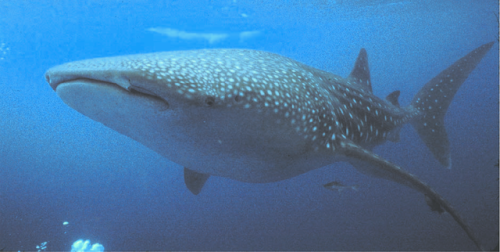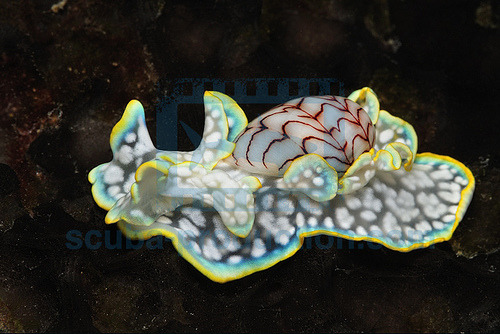Sharks – Like This Sandbar Shark In Flower Garden Banks National Marine Sanctuary – Have Several

Sharks – like this sandbar shark in Flower Garden Banks National Marine Sanctuary – have several adaptations that make them excellent predators.
Specialized organs called ampullae of Lorenzini help sharks sense electric fields in the water generated by other fish. Their eyes, too, are specially adapted: all shark eyes have a tapetum lucidum, a layer of mirrored crystals located behind the retina, allowing them to see in in low light conditions and up to ten times better than humans in clear water.
Despite these adaptations, sandbar sharks and other sharks typically pose little threat to humans. We’re more dangerous to them than they are to us!
(Photo: Nick Zachar/NOAA)
[Image description: A black-and-white photo of a sandbar shark.]
More Posts from Simplyphytoplankton and Others




North Cascades National Park, Washington
A night in the Cascade Mountains

FROM PANAMA TO MARIANA TRENCH: FEMALE WHALE SHARK MADE A RECORD!
For two and a half years, scientists followed the movements of Anne, a whale shark, during which she swam from the coast of Central America to the Mariana Trench.
In 2011, researchers put a transmitter on Anne near Coiba Island in Panama. In the following 841 days, Anne’s transmitter sent a signal to the ARGOS satellite when it swam close to the surface. These trasmitter allowed the team to follow its movements to the south to the Galapagos Islands and throughout the Pacific to the Mariana Trench, to the south of Japan and the east of the Philippines. She traveled a distance of 20142 kilometers.

-Whale shark route from Panama to the Mariana Islands (black track) tagged in September 2011, and old record from Mexico to the Marshall Islands (red track, tagged in September 1995).
The finding reinforces the position of the whale shark as one of the animals that travels most, along with leatherback turtle, gray whale and the arctic tern. In 2016, the IUCN cataloged the species for the first time as threatened. Biologists calculate that tropical and subtropical seas have less than half of whale sharks that they had 75 years ago, which increases the urgency of their protection.
Read also: This is why whale shark aggregate just in 20 sites!
Photo: A whale shark at Gladden Spit, Belize. Source Heyman et al.,2001.
Reference (Open Access): Guzman et al., 2018. Longest recorded trans-Pacific migration of a whale shark (Rhincodon typus). Marine Records





When wood turns into glitter
Many moons ago, in the area that is now Nevada ancient woodlands were living through events that would result in some stunning pieces that grace museums around the world. Some 14 million years ago in the Miocene, the area was thickly forested rather than displaying the arid environment of today. It was also much closer to sea level, since the area has been extensively uplifted since then, due to tectonic stresses caused by the subduction of the Pacific and Farallon plates under the North American one. The area also saw intense subduction related volcanism (ongoing along the USA’s west coast to this day), which periodically covered the forests in silica rich ash. As groundwater interacted with the magma below, weathering the layers of ash into clays, it dissolved silica, precipitating it when conditions such as temperature and pressure changed, replacing the ash covered trees with opal, sometimes so clearly that every cell is visible. While not really suitable for jewellery use due to its tendency to crack as it dries out (called crazing in the trade), these rare logs from the Virgin Valley of Nevada make for stunning collector’s specimens
Keep reading
NSF cancels grant reviews due to WH executive order
The National Science Foundation (NSF)—the major funding agency for basic science—has canceled all grant review panels this week to comply with an executive order from the new administration. This is where independent panels of scientists discuss grant proposals they’ve reviewed for scientific merit and recommend which projects get funded to NSF project managers. A LOT of work goes into setting up and scheduling grant reviews. It will take time to reschedule these panels, delaying key decisions for many promising projects. This will wreak havoc on science grant funding for months to come.
Put simply, this action along with the halting of NIH-funded grants are blatant and reckless political attacks on science, from an administration that seeks blinding loyalty.


The Ghost, Craig Parry’s photo of the famed white whale Migaloo won first place in the underwater world category at the 2017 Golden Turtle International Photography Competition in Moscow this week.

Silence and calmness can be extremely moving. #Whale #MexicoPelagico #PelagicLife #ocean #nature #whale #underwater #mexico Photo by @rodrigofriscione
Showing off those glide and pivot skills 😶🌫️
Fishes in the family Macrouridae, also known as rattails, can glimpse even the faintest flickers of bioluminescence—the “living light” produced by deep-sea animals. Their keen eyesight reveals prey, like fishes and squid, darting in the waters above the seafloor. A rattail relies on other senses, like smell and touch, to find a meal too. It has a nose for rotting carrion, and sensitive barbels on its chin detect small crustaceans or worms wiggling in the mud below.

This seems like something everyone should know if they’re in the sciences and/or interested in reading scientific papers.

Prionace glauca by migueldesigns It’s no exaggeration to say the blue shark is one of the most beautiful sharks swimming in the earth’s waters today. It stands out with its slim, elongated, torpedo-shaped body and beautiful swimming style. Sadly, this shark species is among the most highly fished sharks around. Humans catch it for its fins, meat, oil, and as a display animal because of its beauty. About 10 million blue sharks are killed by humans every year! As a result, this shark is listed as Near Threatened by the IUCN. Blue sharks have a deep blue back with white underbelly, large eyes, and long pectoral fins. It has a particularly strong and unique sense of smell.

To post about the miniature melo (Micromelo undatus) may seem a bit odd, as it is not a nudibranch but a closely-related sea snail! Its thinly-calcified shell is easily seen covering half of its back and is patterned with dazzling brown-red lines, a stark contrast to the blue, white-spotted body below. It lives in many tropic waters, whether that be Japan or Florida, and reaches about 3cm in length. It eats polychaete worms, and uses their toxins as its own.
-
 iclearbouquetsublimeworld liked this · 6 years ago
iclearbouquetsublimeworld liked this · 6 years ago -
 iraflawn liked this · 6 years ago
iraflawn liked this · 6 years ago -
 low-level--00 reblogged this · 6 years ago
low-level--00 reblogged this · 6 years ago -
 low-level--00 liked this · 6 years ago
low-level--00 liked this · 6 years ago -
 boatsxheauxs liked this · 6 years ago
boatsxheauxs liked this · 6 years ago -
 theproblemadult liked this · 6 years ago
theproblemadult liked this · 6 years ago -
 cutesiewooren liked this · 6 years ago
cutesiewooren liked this · 6 years ago -
 rocketeer-raccoon reblogged this · 6 years ago
rocketeer-raccoon reblogged this · 6 years ago -
 coffeekat-nocopycat liked this · 6 years ago
coffeekat-nocopycat liked this · 6 years ago -
 ereborne liked this · 6 years ago
ereborne liked this · 6 years ago -
 batman1856 liked this · 6 years ago
batman1856 liked this · 6 years ago -
 ran-science reblogged this · 6 years ago
ran-science reblogged this · 6 years ago -
 sunkentowers reblogged this · 6 years ago
sunkentowers reblogged this · 6 years ago -
 xomrsalliej4787xo reblogged this · 6 years ago
xomrsalliej4787xo reblogged this · 6 years ago -
 ddedonut reblogged this · 6 years ago
ddedonut reblogged this · 6 years ago -
 ddedonut liked this · 6 years ago
ddedonut liked this · 6 years ago -
 simplyphytoplankton reblogged this · 6 years ago
simplyphytoplankton reblogged this · 6 years ago -
 wolvesinabar reblogged this · 6 years ago
wolvesinabar reblogged this · 6 years ago -
 loudest-cricket liked this · 6 years ago
loudest-cricket liked this · 6 years ago -
 jadewolf-writes reblogged this · 6 years ago
jadewolf-writes reblogged this · 6 years ago -
 paperwolf31 liked this · 6 years ago
paperwolf31 liked this · 6 years ago -
 kaiup11 liked this · 6 years ago
kaiup11 liked this · 6 years ago -
 impossiblenerdalmondauthor-blog liked this · 6 years ago
impossiblenerdalmondauthor-blog liked this · 6 years ago -
 94diana-blog1 liked this · 6 years ago
94diana-blog1 liked this · 6 years ago -
 ceciwolfcat7 liked this · 6 years ago
ceciwolfcat7 liked this · 6 years ago -
 danc503 liked this · 6 years ago
danc503 liked this · 6 years ago -
 zippyg40 liked this · 6 years ago
zippyg40 liked this · 6 years ago -
 gaguito00 liked this · 6 years ago
gaguito00 liked this · 6 years ago -
 lcarpenter103-blog liked this · 6 years ago
lcarpenter103-blog liked this · 6 years ago -
 punk-rock-donut liked this · 6 years ago
punk-rock-donut liked this · 6 years ago -
 rayjoon liked this · 6 years ago
rayjoon liked this · 6 years ago -
 mibatcasayoubatcasa liked this · 6 years ago
mibatcasayoubatcasa liked this · 6 years ago -
 itty-bitty-boy liked this · 6 years ago
itty-bitty-boy liked this · 6 years ago -
 rocknrollshine reblogged this · 6 years ago
rocknrollshine reblogged this · 6 years ago -
 rocknrollshine liked this · 6 years ago
rocknrollshine liked this · 6 years ago -
 heaveninawildflower liked this · 6 years ago
heaveninawildflower liked this · 6 years ago -
 am-b-en reblogged this · 6 years ago
am-b-en reblogged this · 6 years ago -
 addaboy378 liked this · 6 years ago
addaboy378 liked this · 6 years ago -
 phoenixofthesun14 reblogged this · 6 years ago
phoenixofthesun14 reblogged this · 6 years ago -
 phuleh-cypher liked this · 6 years ago
phuleh-cypher liked this · 6 years ago -
 cannibalgh0st liked this · 6 years ago
cannibalgh0st liked this · 6 years ago -
 phoenixofthesun14 liked this · 6 years ago
phoenixofthesun14 liked this · 6 years ago

Blog dedicted to phytoplankton. Phytoplankton are microscopic organisms that are responsible for half of the photosynthesis that occurs on Earth. Oh, and they look like art... Follow to learn more about these amazing litter critters! Caution: Will share other ocean science posts!Run by an oceanographer and phytoplankton expert. Currently a postdoctoral researcher.Profile image: False Colored SEM image of Emiliania huxleyi, a coccolithophore, and the subject of my doctoral work. Credit: Steve Gschmeissner/ Science Photo Library/ Getty ImagesHeader image: Satellite image of a phytoplankton bloom off the Alaskan Coast, in the Chukchi SeaCredit: NASA image by Norman Kuring/NASA's Ocean Color Web https://earthobservatory.nasa.gov/images/92412/churning-in-the-chukchi-sea
158 posts